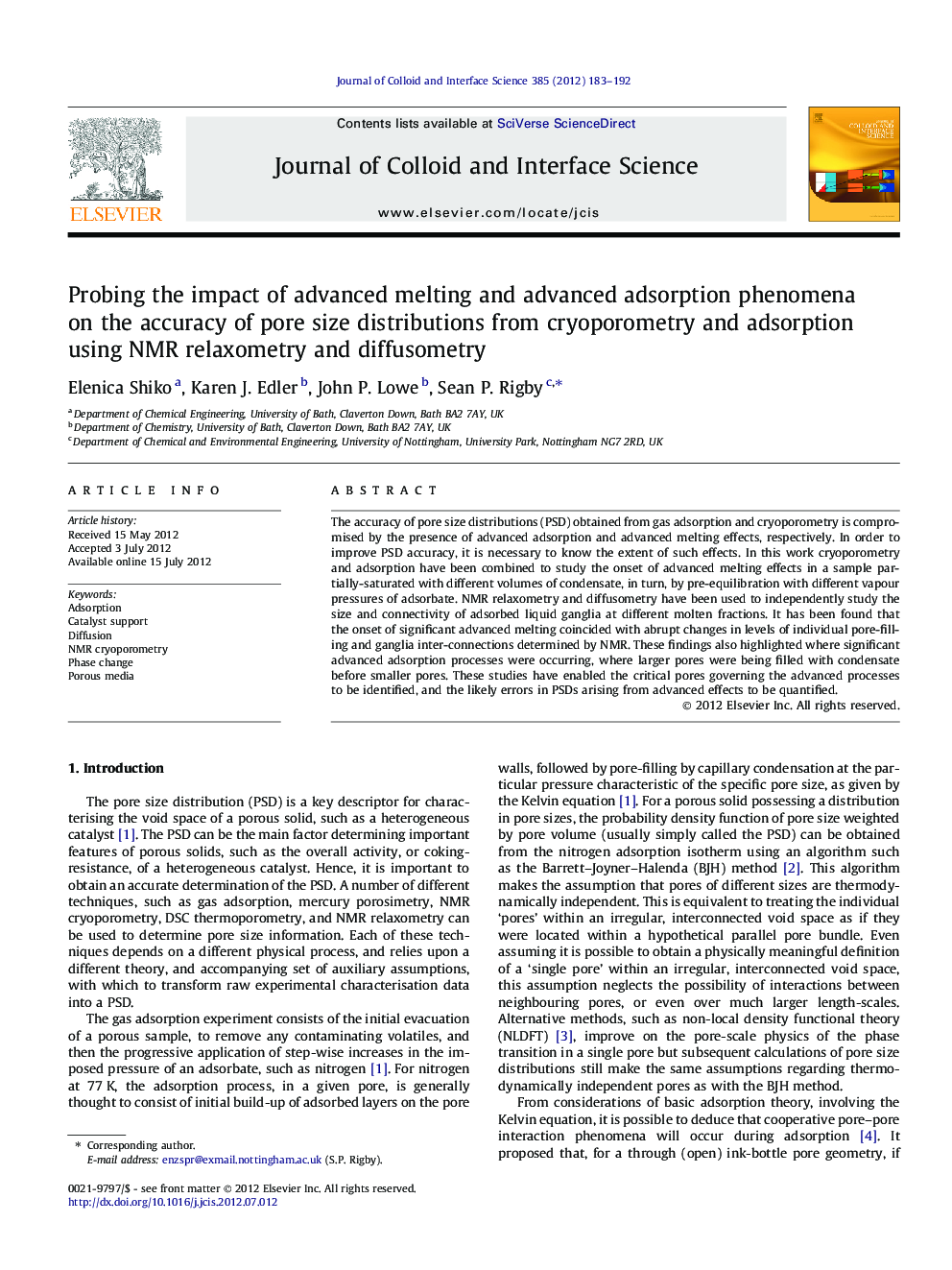| Article ID | Journal | Published Year | Pages | File Type |
|---|---|---|---|---|
| 608023 | Journal of Colloid and Interface Science | 2012 | 10 Pages |
The accuracy of pore size distributions (PSD) obtained from gas adsorption and cryoporometry is compromised by the presence of advanced adsorption and advanced melting effects, respectively. In order to improve PSD accuracy, it is necessary to know the extent of such effects. In this work cryoporometry and adsorption have been combined to study the onset of advanced melting effects in a sample partially-saturated with different volumes of condensate, in turn, by pre-equilibration with different vapour pressures of adsorbate. NMR relaxometry and diffusometry have been used to independently study the size and connectivity of adsorbed liquid ganglia at different molten fractions. It has been found that the onset of significant advanced melting coincided with abrupt changes in levels of individual pore-filling and ganglia inter-connections determined by NMR. These findings also highlighted where significant advanced adsorption processes were occurring, where larger pores were being filled with condensate before smaller pores. These studies have enabled the critical pores governing the advanced processes to be identified, and the likely errors in PSDs arising from advanced effects to be quantified.
Graphical abstractFigure optionsDownload full-size imageDownload high-quality image (44 K)Download as PowerPoint slideHighlights► Novel experimental technique for studying advanced effects. ► Demonstration of pervasiveness of advanced adsorption and melting phenomena. ► Evaluation of likely errors in PSDs obtained using standard methods. ► Possible ways of obtaining more accurate pore structure information.
